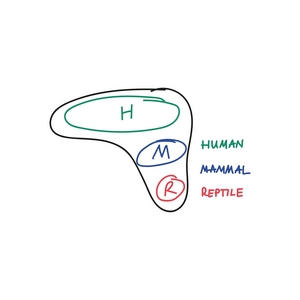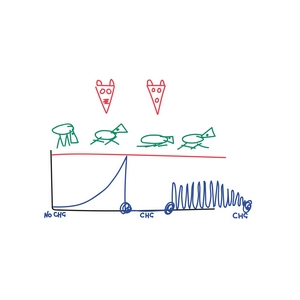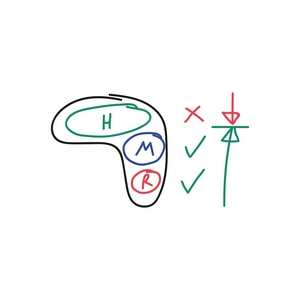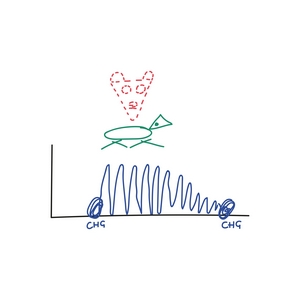Blog / Video #6
One of the strange things about being human is that we often find ourselves disagreeing with others about something as simple as what is really going on. This seems a little absurd. Two video cameras, for example, would never have this problem. They could observe the same event and there’s no confusion about the pixels in the frame or the sound on the audio. Somehow, we lack this clarity.
Relationships are a great example of this. How many couples have had that argument where one says that the other did or said something and this is profoundly disagreed with? We are pretty good data processing machines, so how is this possible? It does sometimes seem that we are all living in slightly different realities.
The Divided Brain
Our brains were built by millions of years of evolution. One way to understand this development is to think about how computers have been built since they were first invented in the 1950s. If you are as old as me, you will share some of that history, and will remember clunky machines which ran primitive software like MS DOS and were very simple, if difficult, to use. Then they evolved. Now we have Macs and Windows, with every fancy bit of software you can imagine installed over the top of them. They are much, much more useful and easier to use, but fiendishly complex. And sometimes this complexity makes them crash.

The divided brain
Your brain is not much different. We can model it as having three parts, the reptile brain, the mammal brain and then the human brain. These represent three stages of development. It is a bit like MS DOS, then Windows, then Word, as a pancake stack of programmes installed on your computer. Our brains were built the same way. Each new development did not delete the old version. It added to it. As a result, you have a lot of ancient software running in your brain, and different parts of your brain doing all sorts of different things. They don’t always agree.
It’s Not Me, It’s You
Interruptions in the normal functioning of a response to threat can create big difficulties for these various parts of the brain. Our threat response is run from the limbic system, which is our mammal and reptile brains, whereas our logical appraisal of threat is done by our thinking, human brain. These two powerful forces begin to move in different directions when our threat responses are unfinished. The diagram below represents a gazelle (in green) drinking at a watering hole, and a lion (in red) ready to eat it. He gazelle notices the lion, and so its nervous system charges up, ready to take action. The charge is too much, and the gazelle becomes overwhelmed (represented by the red line), entering a state of freeze. The problem demonstrated in this diagram is that when the lion, or the danger passes, the gazelle’s threat response is stuck and their nervous system acts in a dysregulated way.

An incomplete response to threat
The problem comes in the last half of this interrupted process. The body, represented by the limbic system in the brain, is going haywire, cycling between responding to a threat and trying to suppress itt. Meanwhile the thinking, human brain can’t find any threat at all. This makes us feel like we are going crazy.
It doesn’t help that these different parts of the brain don’t even share a common language. The limbic system speaks with sensation and emotion. The human brain talks like you and me. So, when there is a disagreement, it not only doesn’t make sense, but it also feels very uncomfortable.
Imagine that you are sitting in a restaurant with your friends and hear the fire alarm going off. You feel this visceral sense of discomfort, which the alarm is designed to cause, and you want to move, to do something about it. Meanwhile, everyone else is behaving as if there is no alarm at all. You look around. You can’t see any danger anywhere. There is no fire. No-one else seems to be able to hear the alarm. No-one is reacting to anything. Until they start to notice how odd you are looking. You start to feel very uncomfortable, like you are going crazy.

The disagreeing brains
This is what happens when the brains don’t agree. And it’s horrible. So what do we do to rescue ourselves? We could just sit there and accept that we are bonkers. Or… we could decide that everyone else is bonkers instead. Which is more threatening? Typically, we chose to see the problem as being located in the outside world, and not in the dysregulation of our own systems. This means that we have created a new threat, in our mind, but projected out by us into the real world. A threat to deal with the fact that we haven’t yet finished dealing with an earlier threat!
So, we have projected onto our present a new, invisible lion. And then we tell ourselves that it is real.

Inventing the invisible lion
Unsurprisingly, not everyone shares the same landscape of invisible lions, so as a result, there is a lot of disagreement about the basic facts of life. Is the alarm ringing or not? You and me can both be utterly convinced of the opposite point of view, and therefore that the other person is the crazy one.
The solutions, as always, is to go inside, rather than to look to the outside. Don’t hold too tightly to your version of reality about another person. Instead invest in looking inside into the reality of how you feel and what sensations come with that. This is your bridge into your limbic system, and where you will find your path out of the incomplete threat cycle that created this problem in the first place.
You can read more about how to do this in the 28-day recovery plan from the book The Invisible Lion.
You can download this post in a handy 2-page PDF to print and share with friends, family, clients or colleagues. Follow this link to download now.
You can buy a copy of The Invisible Lion now on kindle or paperback from your local Amazon store. Just click here to buy now.


